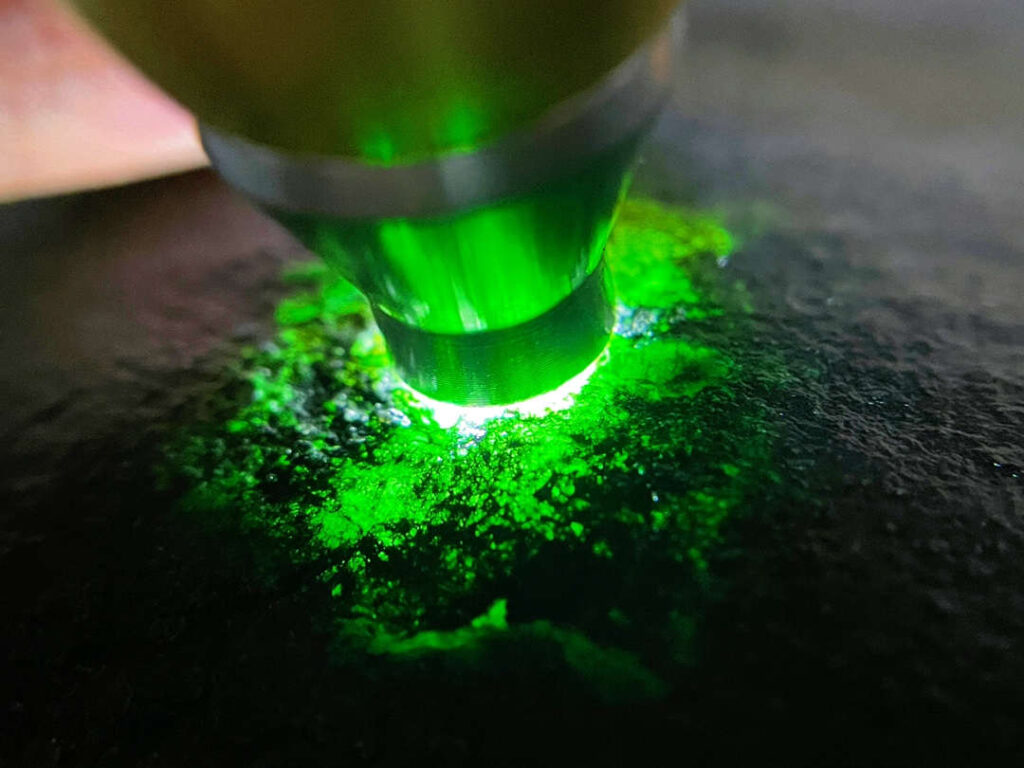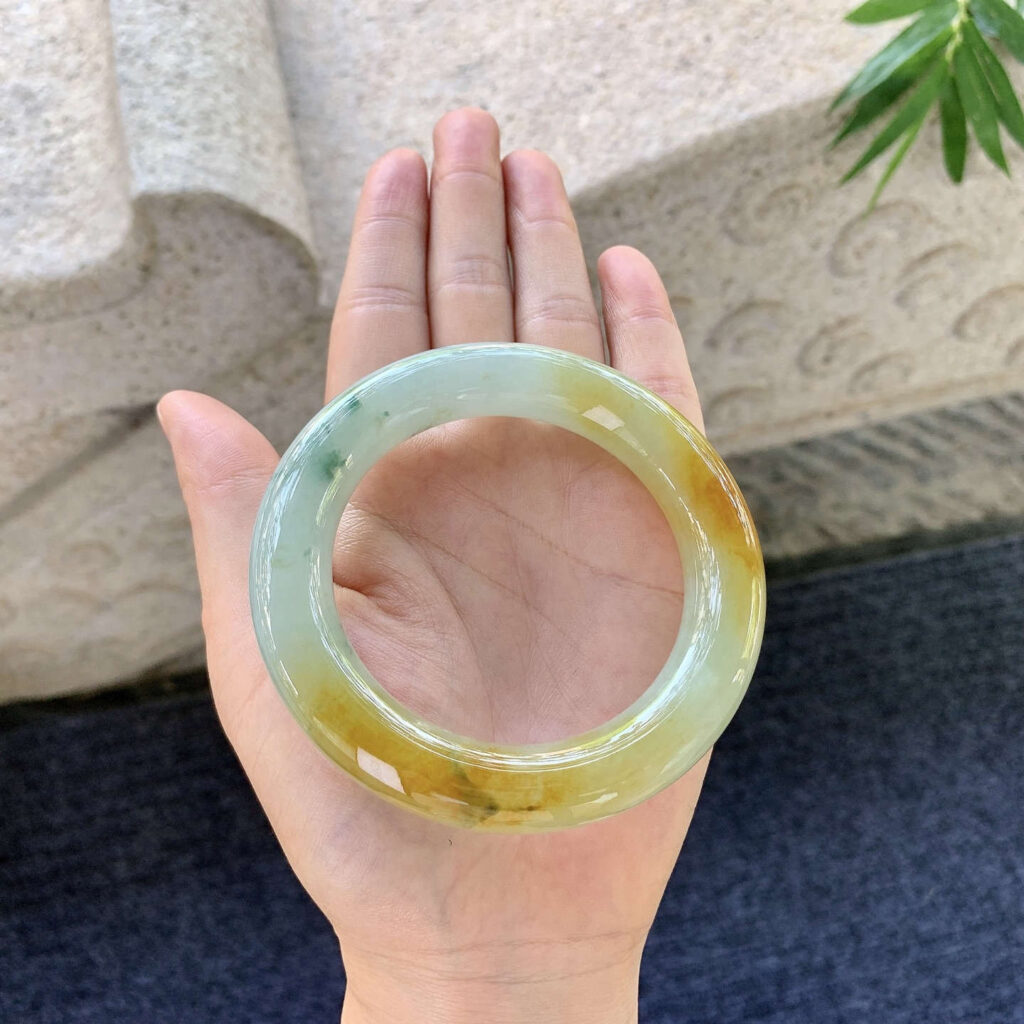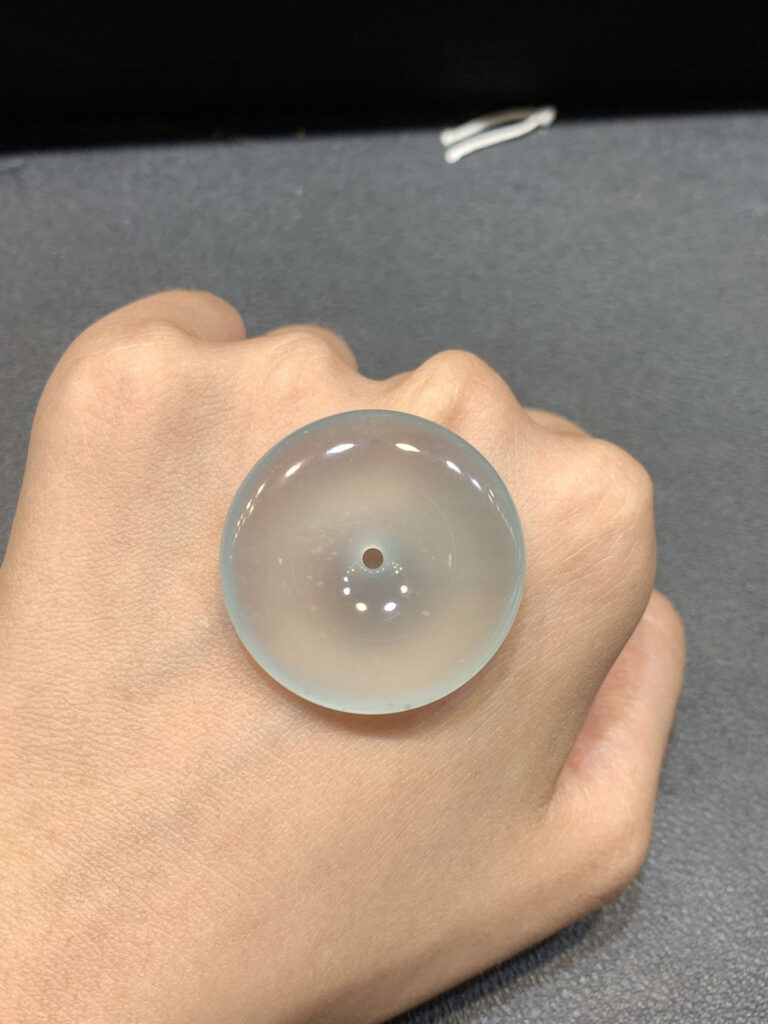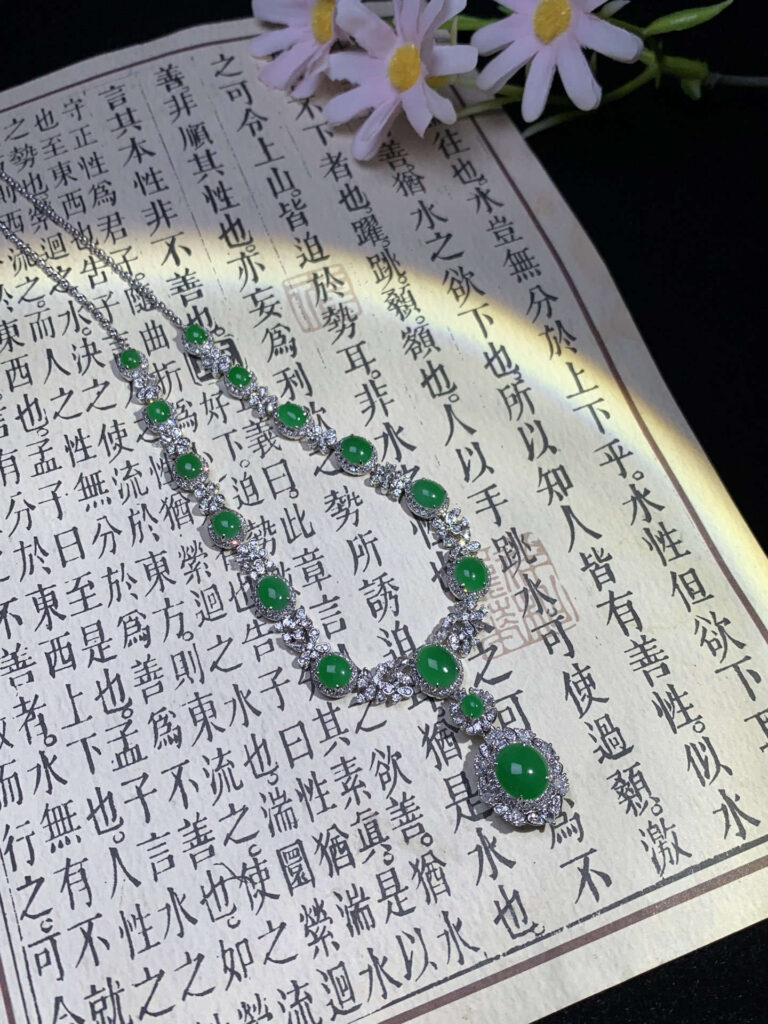Table of Contents

1. The Rising Popularity of Jade in the Global Market
In recent years, jade has experienced a remarkable surge in popularity, not only in traditional markets such as China and Myanmar but also across Europe, North America, and the Middle East. Collectors, investors, and fashion enthusiasts are increasingly drawn to the gemstone’s unique combination of beauty, cultural heritage, and lasting value. Social media platforms and online auction houses have played a significant role in this revival, exposing global audiences to the elegance and prestige of owning genuine jade.
In Asia, jade has never gone out of style—it has been considered a symbol of wealth, protection, and status for centuries. However, in the Western world, jade is enjoying a renaissance. Luxury jewellery brands are incorporating jade into modern designs, making it appealing to a younger generation that values both aesthetics and meaning. As demand grows, so does the curiosity about its value, leading many to search for answers to the question, how much is a jade stone worth.
The growing interest is not limited to jewellery buyers; investors are also paying attention. High-quality jade, especially imperial green jadeite, has seen steady price appreciation in the last decade. Auction records in Hong Kong and Geneva often feature jade pieces selling for hundreds of thousands—or even millions—of dollars. This global trend has cemented jade’s position as both a cultural treasure and a viable investment asset, making the question how much is a jade stone worth more relevant than ever.

2. Breaking Down the Question: How Much Is a Jade Stone Worth?
Determining how much is a jade stone worth is far more complex than simply looking at its size or colour. Unlike many other gemstones, jade’s value is influenced by a unique combination of geological, aesthetic, and cultural factors. This means two stones of similar size can have vastly different prices, depending on their quality and market demand.
To answer the question, one must first understand that “jade” refers to two distinct minerals: jadeite and nephrite. Jadeite, found primarily in Myanmar, is rarer and generally more valuable, especially in vivid colours like imperial green or rich lavender. Nephrite, while more abundant, holds cultural and historical significance, particularly in regions like China and New Zealand, and can also command high prices depending on quality.
Another reason how much is a jade stone worth is such a complicated question is because jade is not graded by the same universal systems used for diamonds or sapphires. Instead, its value is determined by a combination of colour intensity, translucency, texture, craftsmanship, and provenance. For example, a small but flawless piece of jadeite with exceptional translucency may be worth more than a larger stone of mediocre quality.
Cultural factors also play a role. In Chinese tradition, jade is not just a decorative stone—it’s a symbol of virtue, luck, and prosperity. This deep emotional and symbolic connection often increases demand for certain types of jade, thereby affecting their market value. As a result, answering how much is a jade stone worth requires more than a price chart; it requires understanding the stone’s identity, quality, and place in both global and regional markets.

3. The 5 Major Price Drivers for Jade
When asking how much is a jade stone worth, it’s essential to understand the key factors that influence its price. Unlike many other gemstones, jade’s value is shaped by a complex mix of natural qualities and market dynamics. Here are the five major price drivers that buyers and collectors should consider.
3.1 Origin of the Jade
The source of a jade stone significantly impacts its worth. High-quality jadeite primarily comes from Myanmar (Burma), which is considered the gold standard in the jade market. Burmese jadeite is prized for its vibrant colours and superior translucency. Meanwhile, nephrite jade is commonly sourced from China, Russia, New Zealand, and Canada, with Chinese nephrite being especially valued in Asian markets for its historical importance.
The question how much is a jade stone worth cannot be answered accurately without considering where the jade originates. Burmese jadeite, especially untreated imperial green jade, commands some of the highest prices globally, whereas jade from less renowned sources tends to be more affordable but often less sought after by collectors.
3.2 Quality Grading Systems for Jadeite and Nephrite
Unlike diamonds, jade lacks a universally accepted grading system, but experts use several quality criteria to assess both jadeite and nephrite. These include colour saturation, translucency, texture, and absence of inclusions or cracks.
Jadeite’s quality is often ranked into commercial, mid-grade, and investment-grade categories, with investment-grade jadeite being exceptionally rare and valuable. Nephrite is usually judged on smoothness and purity of colour. These quality aspects play a critical role when evaluating how much is a jade stone worth, as slight differences in grading can mean vast differences in price.
3.3 Rarity of the Colour and Pattern
The rarity of a jade stone’s colour and pattern can drastically affect its price. The most coveted colour is the “imperial green,” a vivid, emerald-like green with high translucency. Other rare colours include lavender, icy white, yellow, and even black jade. Patterns like mottling or speckles can either add unique charm or detract from value depending on the market.
Because of this, when buyers ask how much is a jade stone worth, the stone’s colour and pattern often top their considerations. A rare and beautifully patterned jadeite can sell for many times more than a more common green or white stone.
3.4 Market Demand Trends
Market trends greatly influence jade prices. In recent decades, demand from Chinese collectors and investors has driven prices up, especially for high-quality jadeite. The economic rise of Asia has fueled a surge in luxury consumption, making jade a sought-after status symbol.
Conversely, in some Western markets, jade remains more of a niche product, affecting how much buyers are willing to pay. Understanding these market demand trends is crucial to fully grasp how much is a jade stone worth in different regions.
3.5 Historical or Celebrity Provenance
Provenance can add significant value to a jade piece. Stones once owned by celebrities, royalty, or with historical importance often fetch premiums at auctions. This intangible factor can raise the worth of a jade stone beyond its physical qualities, making provenance a key consideration in the question how much is a jade stone worth.

4. Understanding Jade Price Categories
To better comprehend how much is a jade stone worth, it’s helpful to know how the jade market classifies stones into different price categories. These categories help buyers understand what to expect at various price points and guide investment decisions.
4.1 Raw Jade vs. Finished Jewellery
Raw jade stones—those that have been mined but not cut or polished—often sell for a fraction of the price of finished jewellery pieces. The transformation from raw jade to a crafted piece involves artistry, labour, and risk, all of which add to the final cost. When considering how much is a jade stone worth, one must distinguish between raw material and the value added through expert cutting and design.
4.2 Commercial, Mid-Grade, and Investment Grade Jade
Jade is commonly divided into three main quality categories:
- Commercial Grade: These jade stones have lower translucency and less vibrant colour. They are widely used for affordable jewellery and decorative items. Prices in this category are relatively low, making jade accessible to many buyers.
- Mid-Grade: Mid-grade jade features better translucency and richer colour saturation. These stones are often used in quality jewellery and can command moderate prices.
- Investment Grade: The rarest and most valuable jade falls into this category. Investment-grade jadeite, especially untreated imperial green or high-quality lavender, is extremely sought after and can cost tens or hundreds of thousands of dollars per carat. Understanding this category is vital for anyone asking how much is a jade stone worth, especially if buying for investment.
4.3 Why Some Jade Pieces Sell for Millions
Exceptional jade pieces sometimes reach multimillion-dollar prices at auctions. These are often historic, museum-quality stones or uniquely flawless examples of imperial green jadeite. Celebrity ownership or cultural significance can push these prices even higher.
Such extraordinary values highlight why the question how much is a jade stone worth cannot have a one-size-fits-all answer. The jade market encompasses a vast range of qualities, origins, and historical importance, all of which influence pricing.
5. Global Jade Market Insights
The global jade market is complex and dynamic, shaped by regional preferences, cultural significance, and varying demand levels. For anyone wondering how much is a jade stone worth, understanding the major market centers and their unique characteristics is crucial. This section explores the key markets in Mainland China and Hong Kong, Western auction houses, and local artisan markets in Myanmar and New Zealand.
5.1 Mainland China and Hong Kong: The Luxury Hubs
Mainland China and Hong Kong are the epicenters of the jade trade, especially for high-quality jadeite. In these regions, jade is deeply embedded in culture and tradition, symbolizing wealth, status, and good fortune. The demand for premium jade stones, particularly untreated imperial green jadeite, remains extremely strong.
Hong Kong, as an international financial and trading hub, offers a sophisticated market with world-class auction houses, expert appraisers, and well-established jade dealers. Here, collectors and investors often seek to understand how much is a jade stone worth by relying on professional grading and market trends. The city’s transparent pricing mechanisms and high transaction volumes make it an ideal place to gauge true market value.
Meanwhile, Mainland China’s rising middle and upper classes continue to fuel demand for jade jewellery and investment-grade stones. The government’s increasing regulation and support for quality certification have also enhanced consumer confidence, pushing jade prices higher over the past decade.
5.2 Western Auction Houses and Record Sales
Although jade has historically been less prominent in Western markets, its status has grown significantly in recent years. Prestigious auction houses such as Sotheby’s and Christie’s regularly feature exquisite jadeite pieces that attract global attention.
These auctions often set record-breaking prices for exceptional jade stones, with some rare pieces selling for millions of dollars. The rising visibility of jade in Western luxury markets has led to increased awareness of how much is a jade stone worth among collectors and investors outside Asia.
Western buyers tend to focus on provenance, craftsmanship, and rarity, with a keen interest in certified, untreated jadeite. The transparent bidding process at these auction houses provides a reliable benchmark for jade value, helping buyers make informed decisions.
5.3 Local Artisan Markets in Myanmar and New Zealand
Myanmar, as the primary source of high-quality jadeite, also hosts vibrant local markets where raw stones and hand-carved jade artefacts are sold. While prices here are generally lower than in international markets, the authenticity and origin of jade from Myanmar greatly influence global pricing standards. For those curious about how much is a jade stone worth, understanding the supply chain beginning at Myanmar’s mines is essential.
In New Zealand, jade—known locally as pounamu or greenstone—holds special cultural importance for the Māori people. The local artisan market is focused on traditional carving and spiritual significance rather than purely commercial value. Although smaller in scale, New Zealand’s jade market commands respect for its unique heritage and craftsmanship, contributing to the global appreciation of jade.

6. The Investment Side: Will Jade Hold Its Value?
In recent years, more and more people have begun to view jade not just as a beautiful gemstone or cultural artifact, but as a serious investment asset. When considering how much is a jade stone worth, it’s important to explore whether jade can hold or even increase its value over time. This section delves into the investment potential of jade, key factors affecting its value retention, and what buyers should keep in mind before investing.
Jade, especially high-quality jadeite, has demonstrated remarkable price stability and growth in markets like China, Hong Kong, and beyond. The gemstone’s deep cultural significance in Asia, combined with limited supply and increasing global demand, makes it an appealing option for investors seeking alternatives to traditional assets such as stocks or real estate.
One of the strongest arguments for investing in jade is its rarity. Unlike diamonds, which are abundant and often artificially supplied by large companies, natural, untreated jadeite of top quality is extremely scarce. This scarcity tends to drive prices upward, particularly for the highly coveted imperial green jadeite. Thus, when buyers ask how much is a jade stone worth, the stone’s investment grade status becomes a critical factor.
Another important consideration is the provenance and certification of the jade. Authenticity plays a huge role in preserving value. Certified, untreated jadeite with documented origin and grading commands a premium and is more likely to appreciate. Conversely, treated or dyed jade, while more affordable, generally does not retain or grow in value. This distinction is vital for those hoping to make a profitable investment.
Market demand trends also influence jade’s investment potential. The growth of wealthy middle and upper classes in Asia, particularly China, has fueled a surge in demand for luxury jade jewellery and collectibles. As this trend continues, many experts believe that jade prices will remain strong or increase, making it a potentially sound long-term investment.
However, investing in jade is not without risks. The market can be opaque and complex, requiring buyers to have a good understanding of grading, provenance, and market trends. Additionally, liquidity can be lower than other assets; selling a jade stone quickly at a fair price can sometimes be challenging.
7. Final Thoughts: Determining How Much a Jade Stone Is Worth in Today’s Market
Understanding how much is a jade stone worth is a multifaceted question that requires a careful evaluation of numerous factors. The jade market today is both fascinating and complex, blending centuries-old cultural traditions with modern investment trends and global commerce. For anyone interested in buying, selling, or investing in jade, a thorough understanding of these dynamics is essential to accurately determine how much is a jade stone worth.
First and foremost, jade is not a single gemstone but a category that includes two distinct minerals: jadeite and nephrite. Each has its own market, grading standards, and value drivers. High-quality jadeite from Myanmar is typically the most valuable, especially when it exhibits desirable characteristics like vibrant colour, excellent translucency, and fine texture. When evaluating how much is a jade stone worth, it is crucial to differentiate between jadeite and nephrite. Nephrite, while generally more affordable, also holds significant cultural and aesthetic value, especially in markets like New Zealand and parts of China.
The value of jade depends heavily on its origin, quality, colour, and craftsmanship. Untreated, natural jadeite stones with intense “imperial green” hues often fetch the highest prices globally. However, rarer colours like lavender or icy white can also command strong demand. These aspects directly affect the answer to how much is a jade stone worth. Buyers should always seek certified stones with transparent provenance to avoid pitfalls and ensure a clear understanding of how much is a jade stone worth in the current market.
Market demand and cultural factors continue to play a major role in determining jade’s price. In Asia, jade’s symbolism as a token of luck, health, and prosperity sustains robust demand. Meanwhile, Western markets are increasingly recognizing jade’s artistic and investment value. Auction houses worldwide regularly report record-breaking sales, which reflect jade’s rising status as both a luxury item and a collectible. These market trends heavily influence how much is a jade stone worth, making it a dynamic and evolving question.
For investors, jade offers a unique blend of beauty, rarity, and cultural significance that can translate into long-term value appreciation. However, as with any investment, it is important to conduct due diligence, rely on expert appraisals, and understand market conditions before making large purchases. Knowing how much is a jade stone worth requires ongoing education and awareness of market shifts.
In conclusion, answering how much is a jade stone worth is not as straightforward as quoting a price per carat. It requires comprehensive knowledge of the stone’s type, quality, origin, and current market trends. Whether you are a collector, investor, or jewellery enthusiast, educating yourself about these factors will empower you to make informed decisions and truly appreciate how much a jade stone is worth in today’s competitive market.